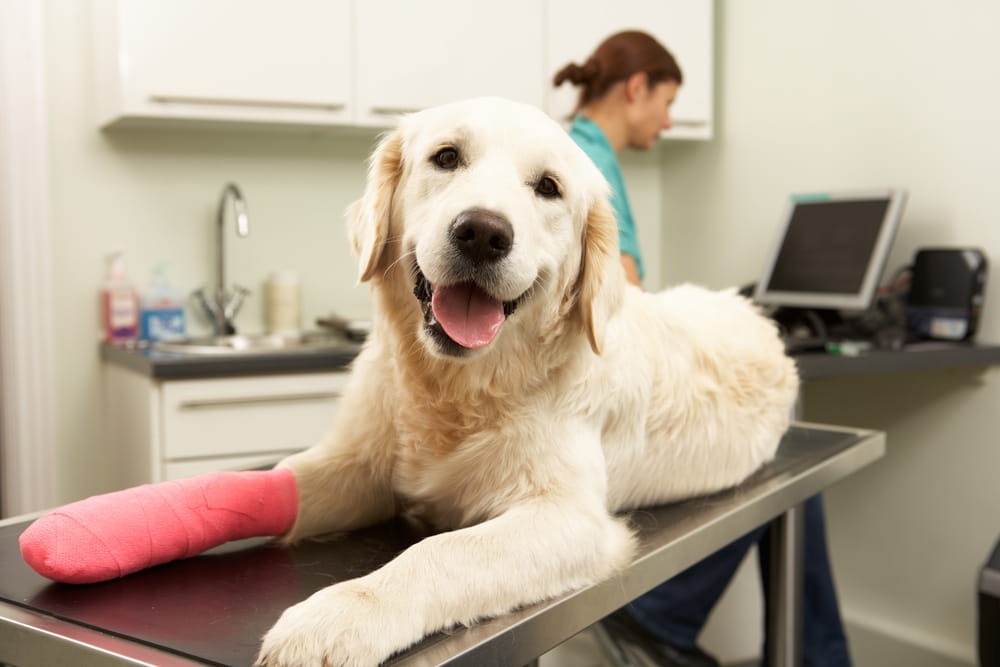Joint problems can affect dogs of all breeds and ages but are most common in senior dogs. These health problems affect their quality of life and probably result in critical injuries and conditions if left untreated.
These problems can be hard to detect unless you know what to look out for. Typically, dogs have two major joint problems: developmental and degenerative. Developmental issues happen if the ligament or joint doesn’t develop properly, resulting in dysfunction. On the contrary, degenerative issues cause the joints to regress gradually.
Your dog’s joints must be regularly checked and cared for, as they tend to deteriorate over time due to age, causing arthritis. As a dog parent, you must determine the signs and symptoms of dog joint problems and promptly get them the correct treatment they require.
The suitable treatment for joint problems and their primary cause will depend on the condition. Light therapy is one of the most common effective treatments used in dogs with joint problems. It increases the blood flow to the joints and reduces inflammation. If you’re unsure whether your dog is suffering from common problems like arthritis, look this up to better understand arthritis in dogs and how light therapy can help.

Dog Joint Problems
Identifying if your dog is experiencing any joint health issues can be challenging. It’s especially difficult to detect among young dogs who tend to engage in their activities normally, even if it’s causing them pain. With that said, here are a few joint issues you should watch out for:
1. Knee Dislocation
Knee dislocation, also known as luxating patella, is a hereditary knee problem caused by the abnormal development of the patella or kneecap. It’s mostly linked to complicated abnormalities of the hindlimb, including the tibia, femur, and hip joint. However, it can also be caused by trauma to the dog’s knee.
If your dog is affected, you may notice a lame walk or skipping strides. You must know that this can affect dogs of any age.
Signs differ widely depending on the magnitude of the displacement. The patella can be reverted to the normal position with your vet’s help in mild cases. If the displacement is more severe, the limb is constantly lame, the dislocated patella is more exposed, and you may notice bone deformation.
2. Osteochondrosis
Osteochondrosis is common among medium to large-sized dogs. This is due to a disturbance in the bone and cartilage development during their growth caused by immature cracked cartilage separated from the primary bone.
Cysts may develop under the cartilage after the fluid gets into the cracked space. This can lead to joint inflammation, resulting in arthritis and consistent cartilage damage, which seriously affects joint movement. In most cases, the cause is unidentified, but potential factors include injury trauma, heredity, and rapid growth.
3. Septic Arthritis
This is a joint problem caused by bacterial infection spread through blood. Bacteria can also enter the body through a wound injury or surgical incision. Fortunately, septic arthritis is rare and is mostly seen in dogs who have had surgery or open wounds.
Some signs of septic arthritis include swelling, lameness, pain in affected joints, listlessness, stiffness, loss of appetite, and fever. In the initial stages of the disease, X-rays might show increased fluid in the joint and degenerative joint issues if the condition has progressed. Lab tests are advised to validate the diagnosis.
4. Elbow Dysplasia
Elbow dysplasia is an abnormal joint development in the elbows of large to giant dog breeds. It includes abnormal cartilage development, bone growth, or joint strains. It has been deemed one of the known causes of osteoarthritis of the canine elbow.
Limping is one of the signs of elbow dysplasia, and it slowly develops in dogs aged four to eight months. However, specific cases may not be diagnosed unless the dog is one year and above.
Progressed conditions can lead to osteoarthritis, crackling sounds, or fluid build-up within the ligaments. If you notice any of these signs, ensure that a vet checks out both elbows. This is because the disease might develop in both elbows concurrently.
5. Joint Cancer
Joint cancer, otherwise known as synovial sarcoma, is an invasive and painful disease. Unfortunately, there are no known causes for joint cancer, but signs and symptoms include joint swelling, limping, ulcerated sores, and fevers. If you do an x-ray on your dog’s joint, it’ll reveal a tumor that will require a biopsy.
Treatments
If your dog has joint issues, you must first consult with your vet. They will help diagnose the condition correctly and recommend the proper treatment. Joint treatment helps reduce pain, improve mobility and stop further damage. Below are six ways to treat your dog’s joint problems.
1. Pain Medication
Pain meds help prevent pain and inflammation. These meds function fast to relieve pain, especially if used with other treatments like therapy, supplements, and weight management.
Non-steroidal anti-inflammatory drugs (NSAIDs) are the most commonly used medications to reduce pain and treat other dog health problems. However, NSAIDs may become inefficient if used over time. So, you should keep tabs with your vet for your dog’s treatment.
2. Surgery
There are times when surgery might be your only option to treat your dog, especially if the other treatment options aren’t working. Surgery can reinstate knee stability and prevent the condition’s progression based on the cause of the joint problem and the area affected. If your dog is suffering from arthritis caused by an injury, cranial cruciate ligament surgery may be the only option to fix the problem and improve your dog’s movement.
3. Supplements
Supplements help maintain your dog’s mobility and keep their joints healthy. Other supplements can also help increase joint fluid flow and prevent inflammation. However, it may take some time to see signs of improvement—around six weeks.
The vet might suggest including fish oil in your dog’s food. The Omega-3 fatty acids in it can help lower inflammation in joints caused by arthritis. Another alternative is a polysulfated glycosaminoglycan (PSGAG) injection, although it’s advisable to have this done by the vet. It has anti-inflammatory properties, helps rebuild knee bones, and its impact is long-lasting compared to oral supplements.
4. Physical Therapy
You could also consider enrolling your dog in a therapy rehabilitation program. Physical therapy programs are customized to suit your dog’s needs and the extent to which you want your dog to improve their stability and movement. A professional usually controls these programs to ensure it’s conducted safely. Some activities include:
- Swimming
- Stretching
- Underwater treadmills
- Joint mobilization
Your dog’s physical therapy procedures will be adjusted over time if they need another form of therapy or are showing signs of improvement.
5. Exercise And Massage
Massage helps improve fluid circulation, resulting in more flexible and relaxed movements for your pet. Gently rub and squeeze your dog’s tight joint muscles to help them relax. Refrain from massaging with too much pressure on the ligaments, as it can cause pain.
You could also book an appointment with a vet or massage therapist who can properly massage your dog. Furthermore, daily exercise will significantly help strengthen your dog’s ligaments and muscles and is good for their cardiovascular health.
6. Weight Management
Too much weight can cause much strain on the muscles and joints, especially if your dog is obese or overweight. In this case, you need to help your dog lose excess weight. However, even though your dog is not overweight, regular exercise and a healthy diet will keep them in good shape.
Conclusion
Handling dogs with joint problems can be exhausting, especially if you don’t know the problem or how to help them. Luckily, there are many ways you can treat your dog’s joint problems to restore their health.
There are also several ways to prevent them from developing these problems in the first place. Keeping your dog at a normal weight and spotting early signs and symptoms of joint problems are the initial steps to maintaining your dog’s health.
Using joint supplements also helps reduce pain and inflammation and prevents the issue’s progression. However, you must always consult your vet to ensure the correct diagnosis and treatment methods are prescribed.
